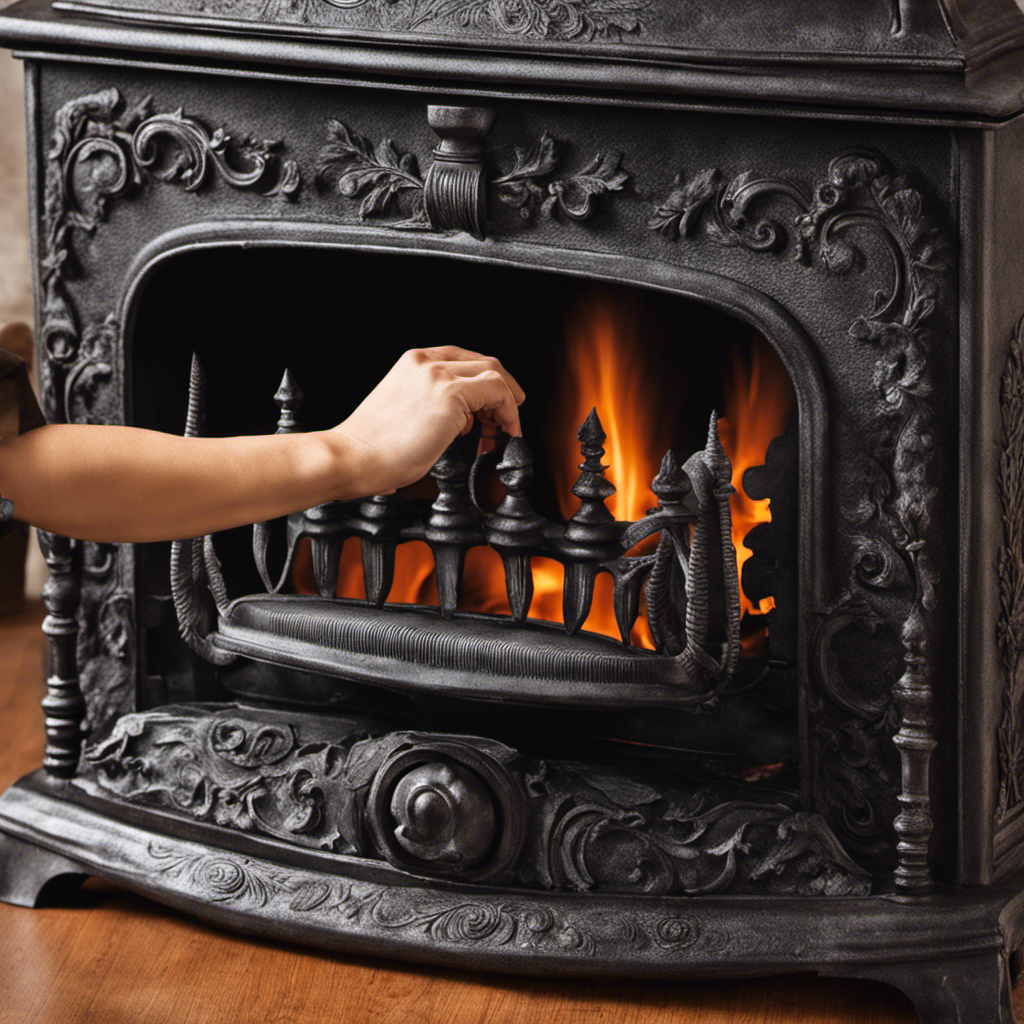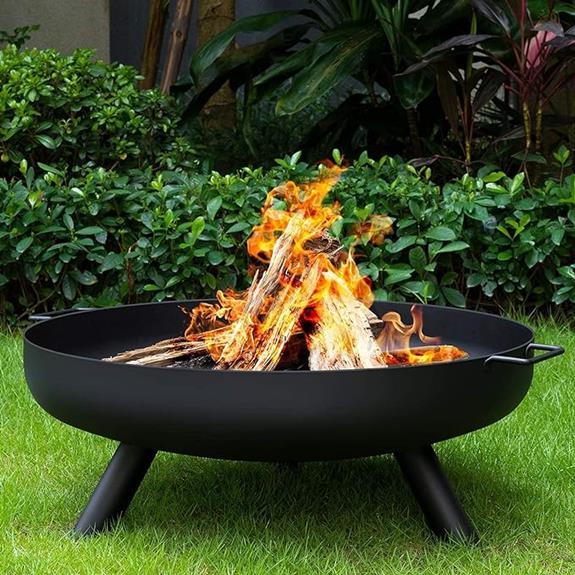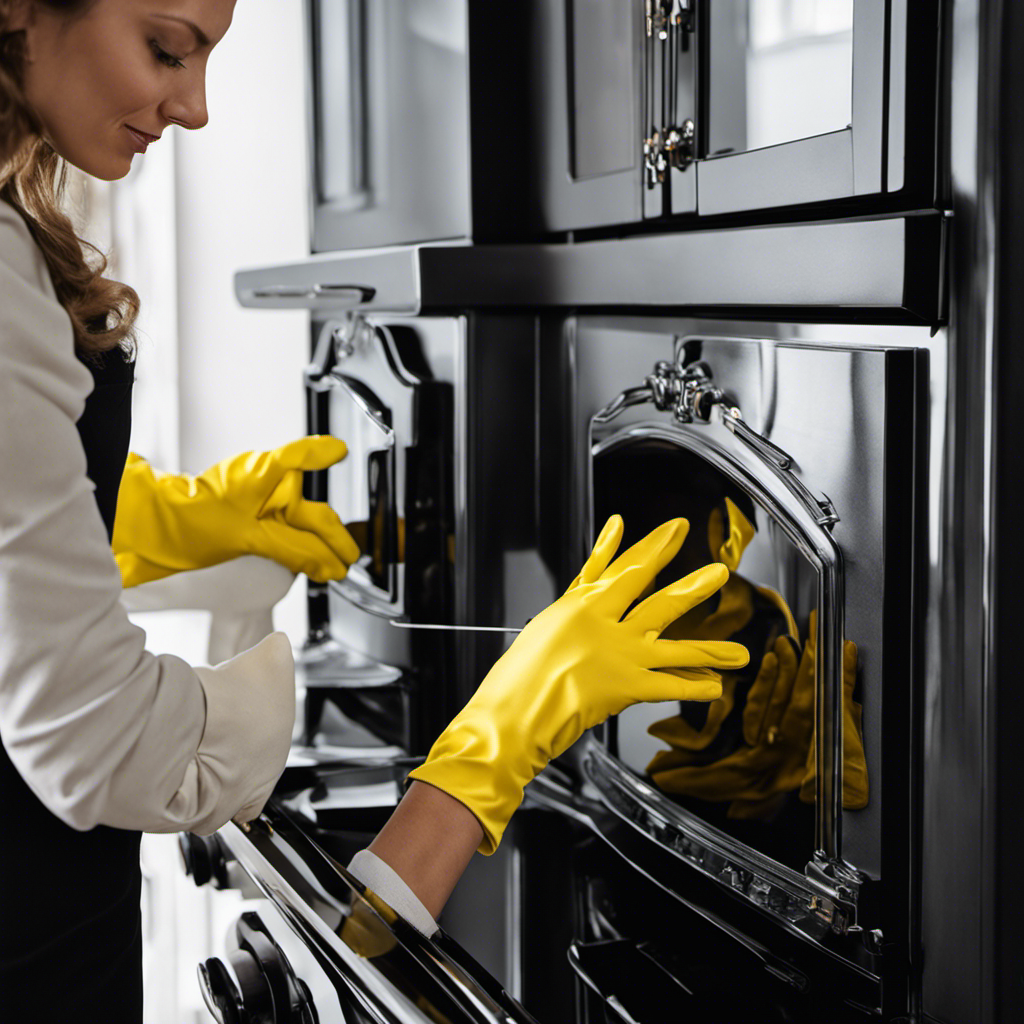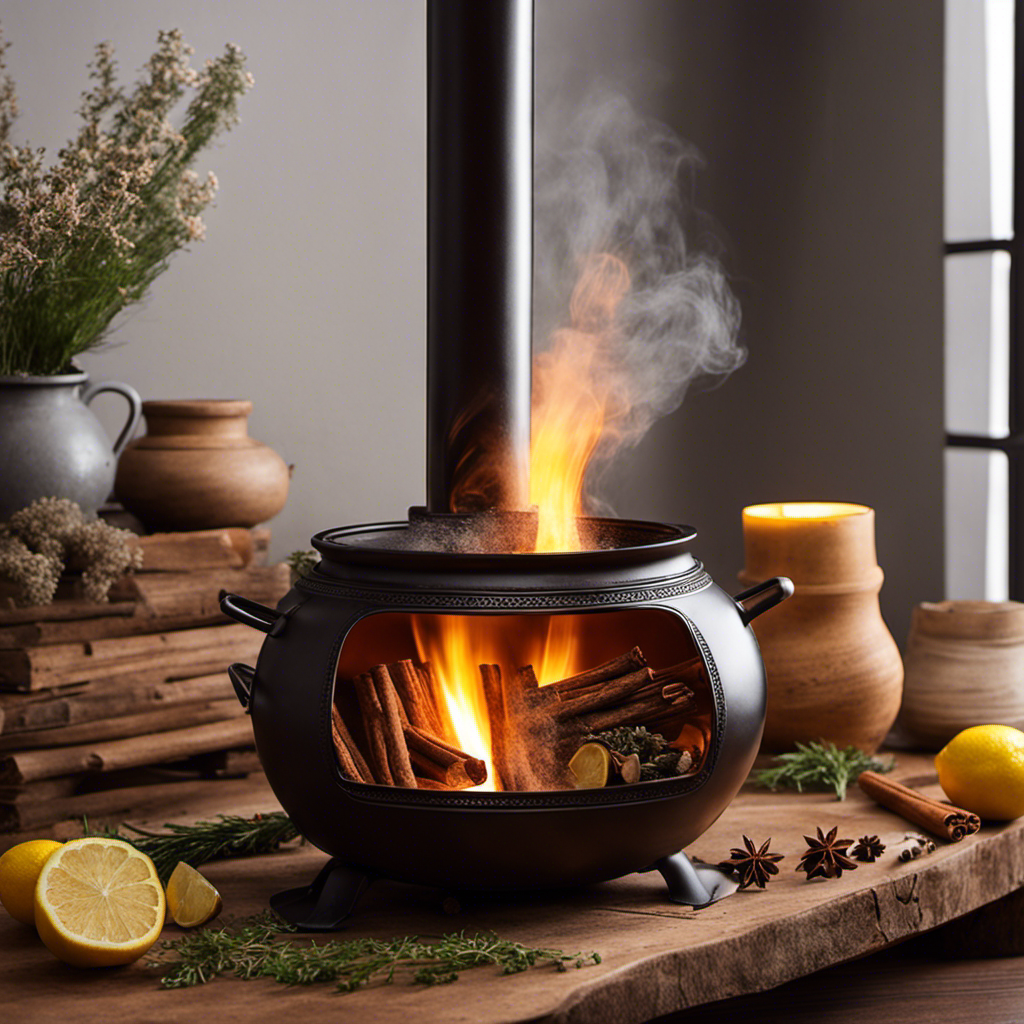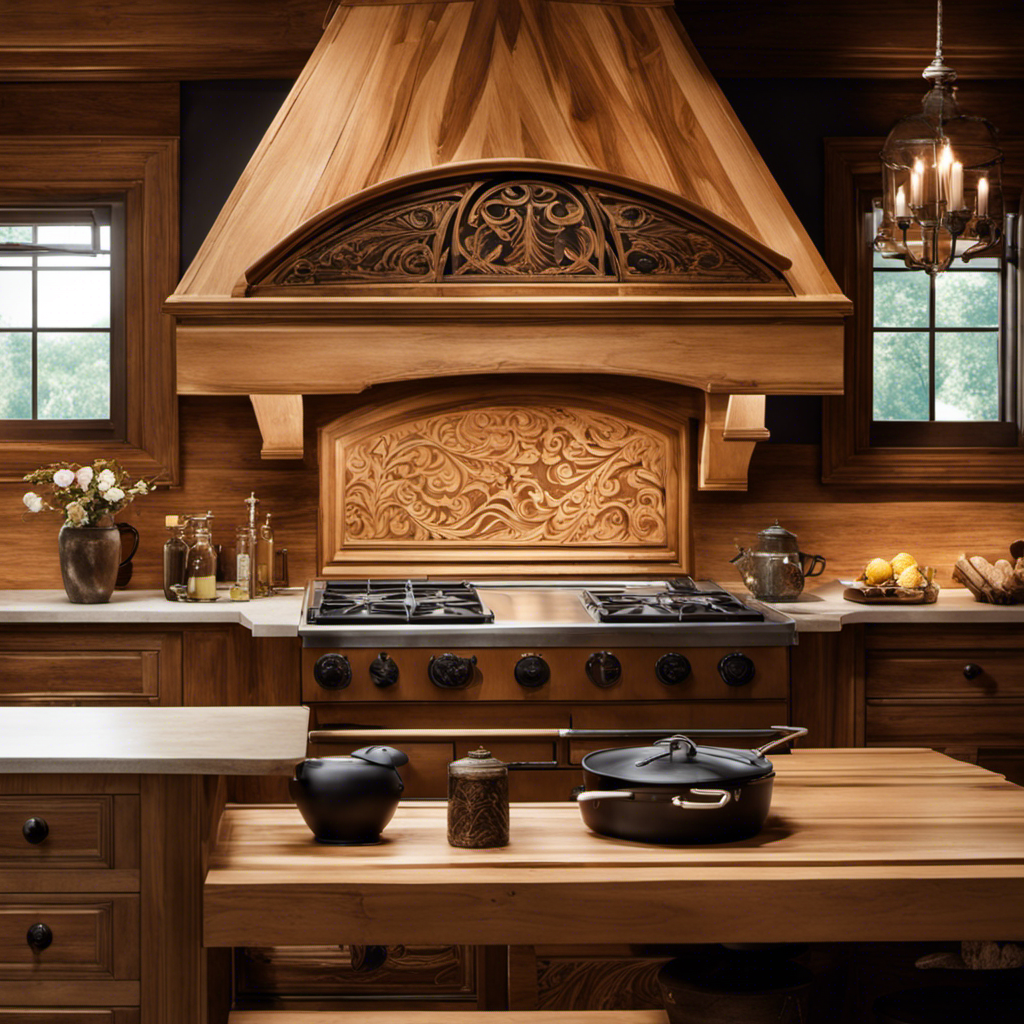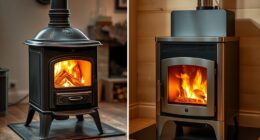As I approached the old wood-burning stove, the worn exterior hinted at the warmth it had provided during many winters. Yet, upon closer inspection, I realized that a substantial amount of effort was required to clean away the layers of soot and grime.
With the right tools and a little elbow grease, I would restore this relic to its former glory. In this guide, I will share my tried and true methods for cleaning an old wood stove, ensuring it continues to bring joy for years to come.
Key Takeaways
- Assess the condition of the old wood stove by evaluating rust, paint peeling, cracks, and wear on door hinges and stove pipes.
- Gather the necessary tools and materials such as a wire brush, stove cleaner, protective gloves, and an ash bucket.
- Prepare the wood stove for cleaning by clearing loose debris, inspecting the chimney cap for security, and addressing any wear or damage.
- Clean the exterior of the old wood stove by wiping it down, removing rust, and ensuring the surface is clean and ready for use.
Assessing the Condition of the Old Wood Stove
I need to carefully inspect all four sides of the old wood stove to assess its condition.
First, I’ll evaluate the rust on the exterior surface. Rust can indicate moisture damage and weaken the structure of the stove. I’ll look for any signs of flaking or peeling paint, which could be a sign of corrosion.
Next, I’ll inspect for damage. This includes checking for any cracks or holes in the stove’s body and examining the door hinges for any signs of wear. I’ll also examine the stove pipes for any dents or leaks.
Additionally, I’ll inspect the interior of the stove for any build-up of creosote or other debris.
This thorough evaluation will help me determine the extent of the stove’s condition and decide on the necessary cleaning and repairs.
Gathering the Right Tools and Materials
To properly clean the old wood stove, I will need to gather the right tools and materials, such as a wire brush, stove cleaner, and protective gloves. Choosing the right cleaning products is crucial to ensure the longevity and efficiency of the stove. I recommend using a non-abrasive stove cleaner specifically designed for wood stoves. It is important to avoid harsh chemicals that can damage the stove’s finish or emit toxic fumes when heated. When cleaning, always wear protective gloves to avoid any skin irritation or burns. Proper disposal of ash and debris is another important aspect of cleaning the wood stove. Use a metal ash bucket with a tight-fitting lid to store the ash until it cools completely. Never dispose of hot ash or debris in a plastic bag or container, as it can pose a fire hazard. Remember, safety should always be the top priority when cleaning a wood stove.
| Tools | Materials | Safety Equipment |
|---|---|---|
| Wire brush | Stove cleaner | Protective gloves |
| Ash bucket | ||
Preparing the Wood Stove for Cleaning
Before starting the cleaning process, remove any loose debris from the wood stove, and check if the chimney cap is securely in place. This pre-cleaning inspection is essential to ensure the safety and effectiveness of the cleaning process.
Here are three steps to follow when preparing your wood stove for cleaning:
-
Clear the stove of any loose debris: Use a brush or vacuum to remove ashes, soot, and any other loose particles from the stove. This will prevent them from spreading and potentially causing a fire hazard during the cleaning process.
-
Inspect the chimney cap: Ensure that the chimney cap is securely attached to the chimney. This will prevent any debris or animals from entering the chimney and causing blockages or damage.
-
Check for any signs of wear or damage: Look for cracks, rust, or other signs of wear on the stove and chimney. Address any issues before proceeding with cleaning to ensure the safety and longevity of your wood stove.
Cleaning the Exterior of the Old Wood Stove
After removing the loose debris, I’ll use a damp cloth to wipe down the exterior of the old wood stove. This step is crucial in preparing the surface for further cleaning and preventing any dirt or dust from scratching the stove’s finish.
Once the surface is clean, I can focus on removing rust, which is a common issue with old wood stoves. To tackle this, I’ll use a wire brush or steel wool to gently scrub away the rust. It’s important to be thorough but gentle to avoid damaging the stove’s surface.
After removing the rust, I’ll wipe the area with a clean cloth to ensure all debris is removed. This will leave the exterior of the stove looking clean and ready for use.
Cleaning the Interior and Chimney of the Old Wood Stove
While scrubbing the interior of the old wood stove, I noticed a buildup of soot and debris in the chimney. As someone who’s dealt with cleaning old wood stoves before, I understand the importance of maintaining a clean and functional chimney.
Here are three steps I’d take to clean the interior and chimney of an old wood stove:
-
Cleaning the ashtray: I’d start by removing the ashtray and emptying it into a metal container. Then, using a brush and dustpan, I’d carefully sweep out any remaining ashes and debris from the ashtray.
-
Removing rust: Rust can be a common issue in old wood stoves. To remove rust, I’d use a wire brush or sandpaper to scrub away the rusted areas. Afterward, I’d apply a rust converter or primer to prevent further rusting.
-
Chimney cleaning: To clean the chimney, I’d use a chimney brush that matches the size of the flue. Starting from the bottom, I’d carefully insert the brush and scrub the walls of the chimney in an up-and-down motion. This will help remove any built-up soot and debris, ensuring proper ventilation.
Overall, cleaning the interior and chimney of an old wood stove requires attention to detail and patience. By following these steps, you can maintain a clean and efficient wood stove for many years to come.
Frequently Asked Questions
Can I Use Regular Household Cleaning Products to Clean the Exterior of the Old Wood Stove?
Yes, you can use regular household cleaning products to clean the exterior of an old wood stove. However, there are alternative cleaning methods specifically designed for wood stoves that may yield better results.
How Often Should I Clean the Chimney of My Old Wood Stove?
I clean the chimney of my old wood stove every year to ensure optimal performance. Regular chimney cleaning is essential for preventing creosote buildup and reducing the risk of chimney fires.
Can I Use a Wire Brush to Clean the Interior of My Old Wood Stove?
I find that using a wire brush to clean the interior of an old wood stove can be effective. However, there are alternative cleaning methods that may work better depending on the condition of your stove.
Is It Necessary to Wear Protective Gear While Cleaning the Old Wood Stove?
Yes, it is necessary to wear protective gear while cleaning an old wood stove. Safety precautions are essential to prevent burns and exposure to harmful chemicals. I recommend wearing gloves, goggles, and a mask for your own protection.
What Should I Do if I Encounter Stubborn Stains or Rust During the Cleaning Process?
If I encounter stubborn stains or rust while cleaning, I use effective cleaning techniques to remove them. By applying the right products and scrubbing gently, I can restore the wood stove’s appearance.
Conclusion
In conclusion, cleaning an old wood stove requires a thorough assessment of its condition, gathering the right tools and materials, and preparing the stove for cleaning.
By cleaning the exterior and interior, as well as the chimney, you can ensure optimal performance and longevity.
So, why wait? Get started on cleaning your old wood stove today and enjoy the warmth and ambiance it brings to your home.
Logan’s affair with adventure began in childhood. He hailed from a small town where vast forests bordered one side and endless shores stretched on the other. His days were spent exploring uncharted woods, climbing tall trees, or listening to the tales of old sailors. This early immersion in a world brimming with stories and mysteries became the foundation of his passion for writing.

